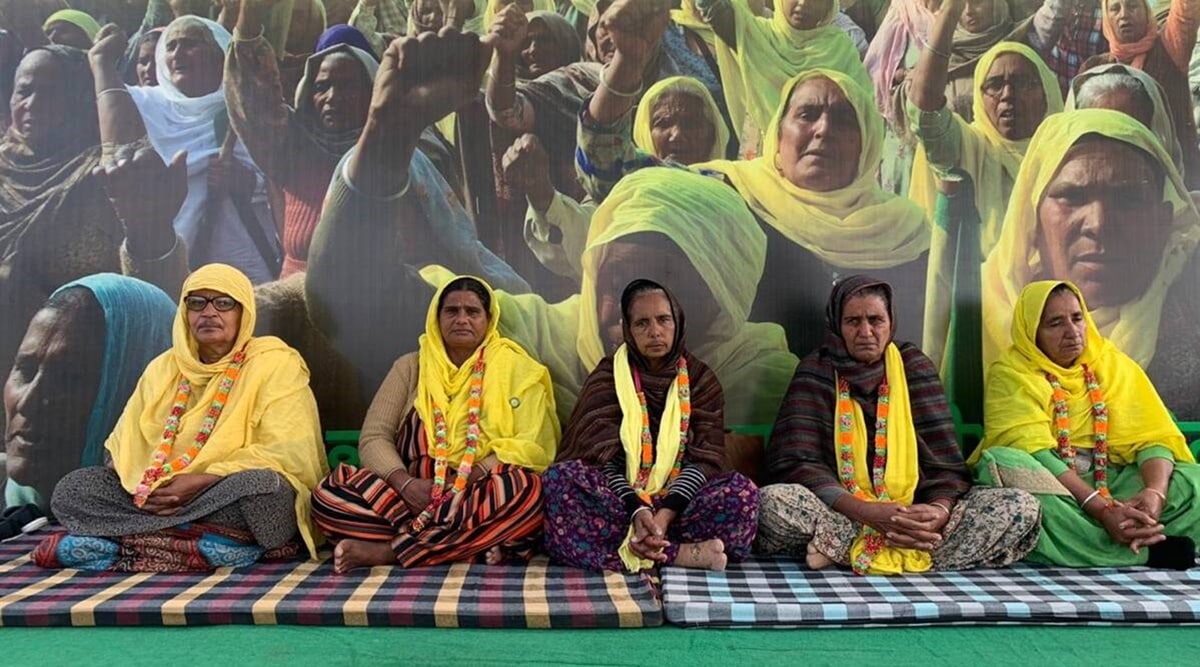 Women’s units of BKU (Dakaunda), BKU (Doaba) etc. have also been formed. (Express File)
Women’s units of BKU (Dakaunda), BKU (Doaba) etc. have also been formed. (Express File) The ongoing farmers’ protest has given a major fillip to women’s units in the farm outfits with their number increasing manifold in the last four months to reach over 2,000 units across the state.
These units are being formed at village, block, zone and district levels with a 5 to 11 member committee of office-bearers including president, vice-president and general secretary.
BKU (Ugrahan) general secretary Sukhdev Singh Kokrikalan said: “We had around 500 women’s units across 13 districts in the state before the beginning of this ongoing protest as our organisation was more active in the 13 districts of the total 22 districts of the state. But now we have around 1,600 women units as nearly 1,100 new units have been formed by our organisation during this protest and also now our union is active in 16 districts of the state as three new districts got added now because we are getting demands from the farmers of those districts where we were not active earlier to form units in their respective districts now.”
BKU (Ugrahan) is one of the biggest farm unions of the state which is sitting at the Tikri border for the past over four months, adding that the demand for women units is overwhelming.
“We have covered almost all the 11 districts of Malwa region and apart from that we are now covering Jalandhar and Kapurthala districts in Doaba region, Amritsar, Tarn Taran and Gurdaspur districts of the Majha region,” he added.
Jagsir Singh of BKU (Ugrahan) said that in Bathinda block, they have already formed seven new women’s units in the past over a couple of months while the number of the new units is 4-5 times more in the entire district.
Baljinder singh, press secretary of Punjab Kisan Mazdoor Sangharsh Committee said that the number of women’s units has also increased manifold under their organisation during this protest.
“We are forming these units at both village and zone-level as under one zone we cover around 30 villages and over 1,000 women’s units have been formed by our organisation in 10 districts of the state,” said Baljinder singh, adding that in Ferozepur, Tarn Taran and Amritsar districts alone the outfit had nine, 12 and 14 zones, respectively and every zone has formed women units recently.
He said that the meetings of these women’s units are taking place and around 500 such units will participate in a march to Delhi on April 5 to participate in the ongoing protest at Singhu border.
Women’s units of BKU (Dakaunda), BKU (Doaba) etc. have also been formed.
Harbans Kaur, the newly appointed president of one such unit from village Karamgarh Sattran, said that they were participating in farmers’ protests earlier too, but now they wanted to organise themselves in a form of a unit. “So we requested BKU (Ugrahan) leaders to form a unit. Then they organised village-level election process and elected the women committee in which a president and five other office-bearers were elected,” she said.
Kaur added: “We are not only participating in the protests but also making the women of our village aware about the farm bills and how these will affect not only farmers but every consumer.”
Veerpal Kaur, another woman president of the unit, said that now women in every village have become aware and they themselves are coming forward to make their units so that they can contribute in this protest in some way.
“Why should we stay behind when our men are fighting at the front to protect the future of our children,” said another women leader Manjit Kaur, secretary of the newly elected women’s unit of the Bathinda block, adding that “our separate units give us a new strength and individuality and help us to shape our programmes at village level”.
“We want to make women strong at the grassroots level so that this protest gets more momentum,” said another woman Sukhjit Kaur from the
newly elected unit, adding that there was no restrictions on participating in farm protest earlier too, but these units have given women more power.
- The Indian Express website has been rated GREEN for its credibility and trustworthiness by Newsguard, a global service that rates news sources for their journalistic standards.

